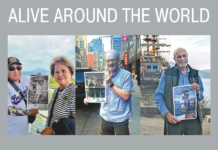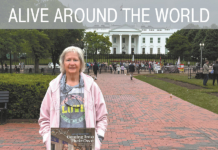 Send in your ALIVE! AROUND THE WORLD
Send in your ALIVE! AROUND THE WORLD
Take Alive! with you wherever you go! Bring your recent copy of Alive! with you when you travel and snap a high resolution photo of you holding Alive!
Send in your pictures and descriptive text using the online form, and we’ll publish it.
SUBMIT YOUR ALIVE! AROUND THE WORLD
![]()
Southeast Asia
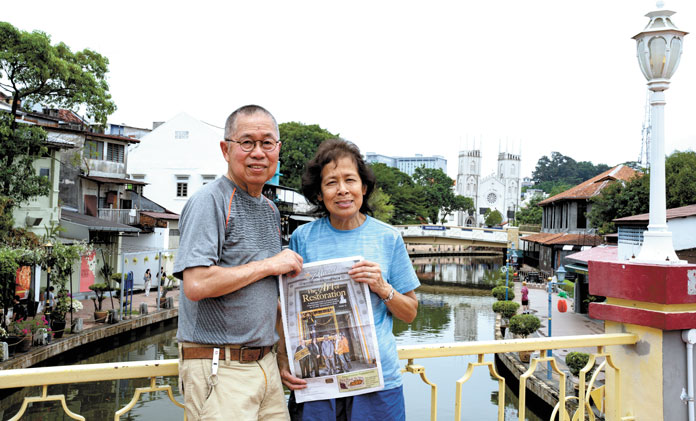
 Elizabeth Lee, Retired, Finance, and her husband, Tony, visited their golden travel anniversary country (50th country visited), Malaysia. Melaka and George Town, Malaysia, are World Heritage Cities by UNESCO. Pictures shown are Melaka River and street art “Brother & Sister” by Louis Can in George Town.
Elizabeth Lee, Retired, Finance, and her husband, Tony, visited their golden travel anniversary country (50th country visited), Malaysia. Melaka and George Town, Malaysia, are World Heritage Cities by UNESCO. Pictures shown are Melaka River and street art “Brother & Sister” by Louis Can in George Town.
![]()
Vietnam
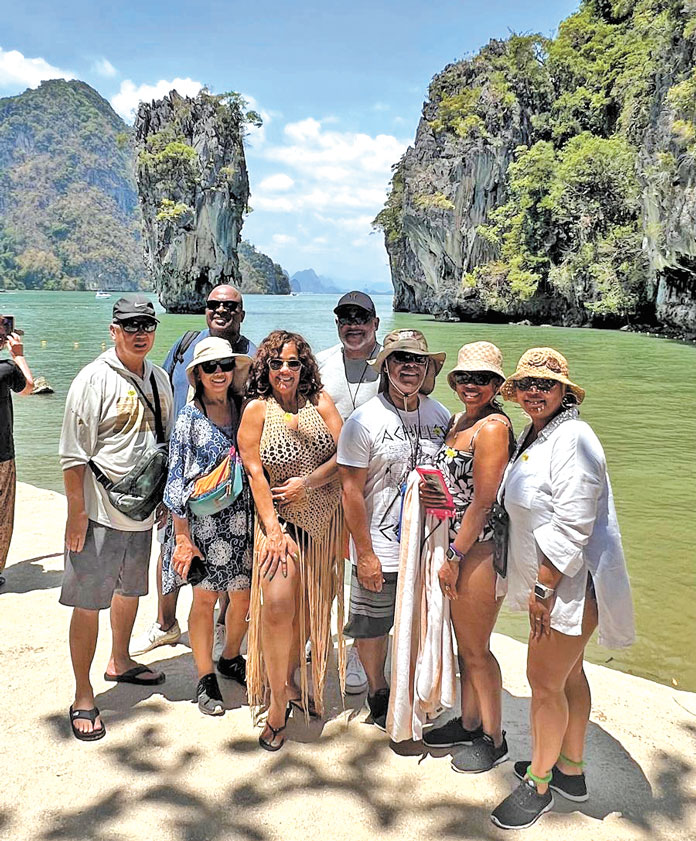
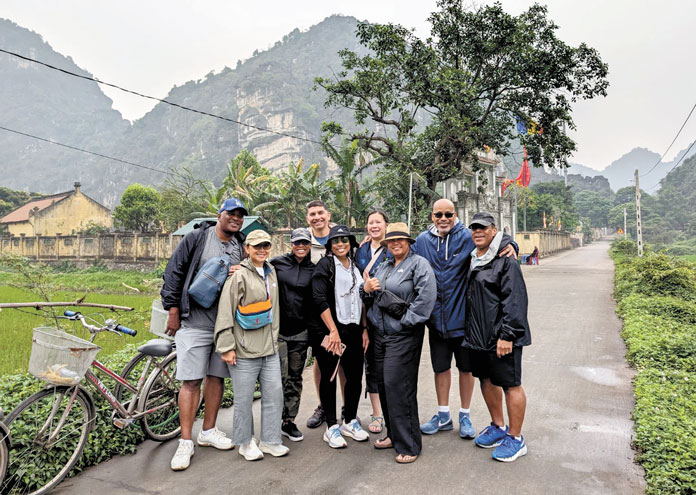 Hey, it’s our friends, the Cali Passport Posse – stars of our March cover story – traveling again, this time to Southeast Asia. Here they’re cycling near rice fields in Vietnam. Pictured are Greg Hornsby Sr., Trinh Nguyen, Latrice Williams, Zebbra Corbin-Rodgers, Aditya Sharma, Ethelinda Reyes, Max Reyes, Steve Starks and Earl Rodgers. Most are Retired, LADWP.
Hey, it’s our friends, the Cali Passport Posse – stars of our March cover story – traveling again, this time to Southeast Asia. Here they’re cycling near rice fields in Vietnam. Pictured are Greg Hornsby Sr., Trinh Nguyen, Latrice Williams, Zebbra Corbin-Rodgers, Aditya Sharma, Ethelinda Reyes, Max Reyes, Steve Starks and Earl Rodgers. Most are Retired, LADWP.
Letter From Chile
Conquistadors, the Irish and Great Wines
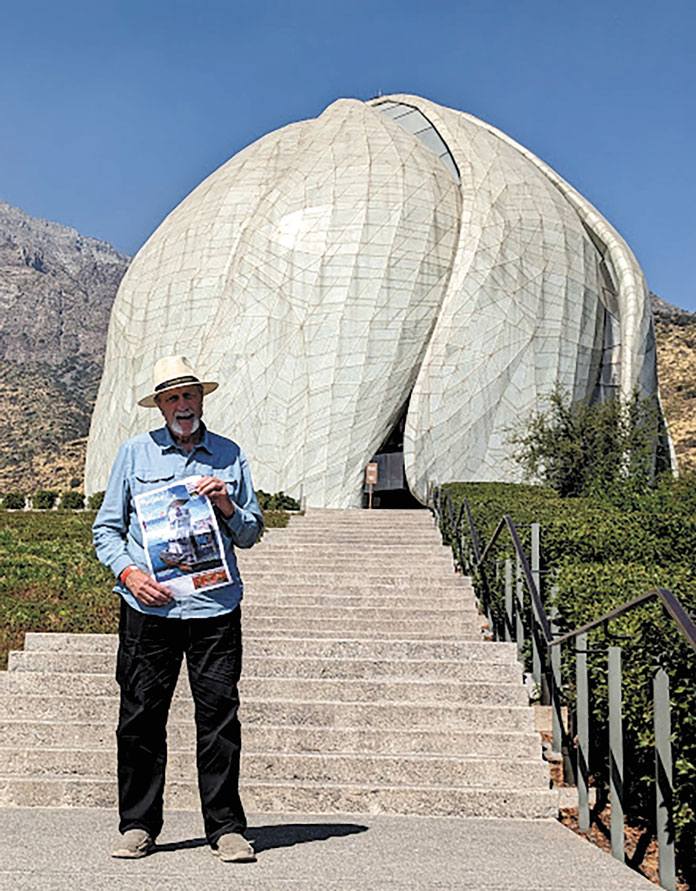
South America is an oyster waiting to be explored, so if you are adventurous and have an independent spirit, avoid organized tours and go.
Contrary to popular opinion, South America is safe, and the bonus is that food, travel and accommodation are a quarter of the price of the United States.
Forget Peru, Machu Picchu or Brazil’s Mardi Gras; those are all swarming with cruise ship passengers and package-tour groups.
Think of Chile’s salt-flat desert, Salar de Atacama, high in the Andes mountains, at 7,900 feet. It is the world’s third-largest salt desert. Check out the Laguna Cejar sinkhole whose salt concentration makes it like swimming in the Dead Sea, or the flamencos in Los Flamencos National Park. Chile has many volcanoes, and some are still active. Climbers travel from around the world to hike up these volcanoes, so why not you? If this is too much of an adventure, try trekking around the world’s largest waterfall in the jungle on the Paraguayan, Brazilian and Argentine borders. It takes 18 hours on an overnight coach or two hours by local plane to get there from Rio or Buenos Aires.

If you prefer something less strenuous, visit one of the vineyards in Uruguay, Argentina, or the area around Santiago, Chile. All are just a short flight away from LAX on LATAM Airlines. Its economy class has lots of legroom plus attentive cabin staff who cheerfully serve food and drinks.
Chile has been populated since at least 3,000 BC, with its mild Mediterranean climate – hot days and cooler nights in the summer. Its beaches are perfect for tourists; the first one to visit from Europe was Ferdinand Magellan in 1520, followed by lots of Spanish conquistadors looking for gold and silver. They stayed for 300 years until Napoleon Bonaparte conquered Spain, allowing local patriots led by Bernardo O’Higgins and fellow Irishman and military adviser John MacKenna with Argentine General José de San Martín to the liberation of Chile.
Bernardo O’Higgins, son of the 1st Marquis of Osorno, a Spanish officer born in County Sligo, Ireland, was never married but acquired a family like his father had. In 1823, Chile was the second country in the Americas to prohibit slavery, after Haiti. The USA followed suit 42 years later, in 1865.
Like most Latin American countries, Chile’s national sport is football (soccer). Although Spanish is the official language, English is commonly spoken in the major cities, especially in Santiago. However, never assume that an individual speaks English. It is always polite to ask.

Chile has produced wine since the Jesuit priests brought vines from Spain nearly 700 years ago. While in the Santiago area, I visited the Cousino Macul winery, founded in 1856 and still family owned. It produces limited quantities of fine wines stored in stainless steel vats and later moved to oak barrels, giving them the distinctive character of the Maipo Valley. They’re easy to drink.
In the foothills of the surrounding Andes mountains is the attractive shell-shaped Bahá’í House of Worship, one of the eight temples scattered around the world of this young independent religion from Iran, promoting unity through acts of prayer and service. Designed by architect Siamak Hariri, this 98-foot circular building comprises nine arched “sails” made from marble and cast glass; it opened in 2016. On a smog-free day, from its gardens and picnic tables, there is a panoramic view of the city below. Go late; you will catch the sun setting over the magnificent Andes mountains.
No gold is left in Chile, and the fountain of youth is as elusive as ever, but making fantastic memories is still possible. Be bold and try to visit somewhere new; tours are excellent but very restrictive.
The next stop is Argentina.
The Captain





